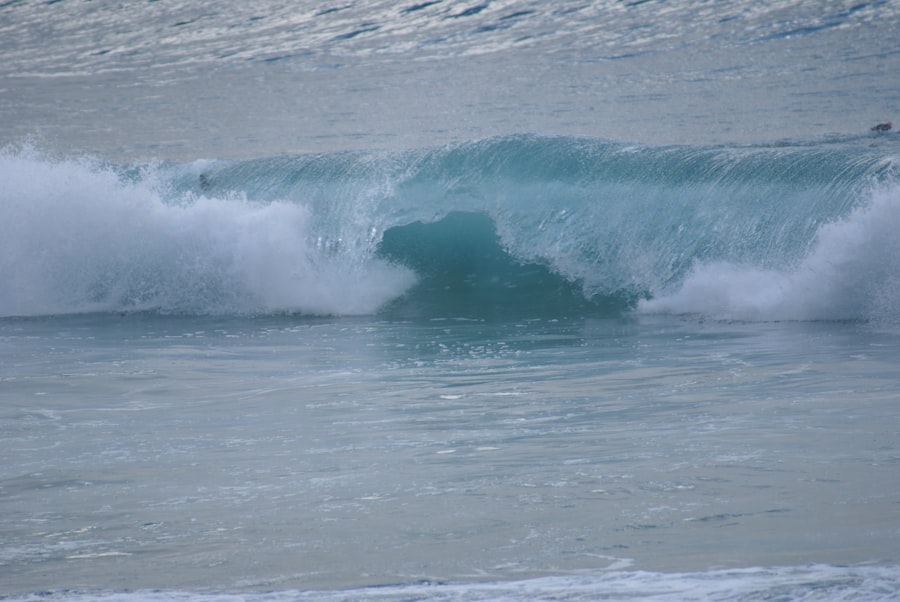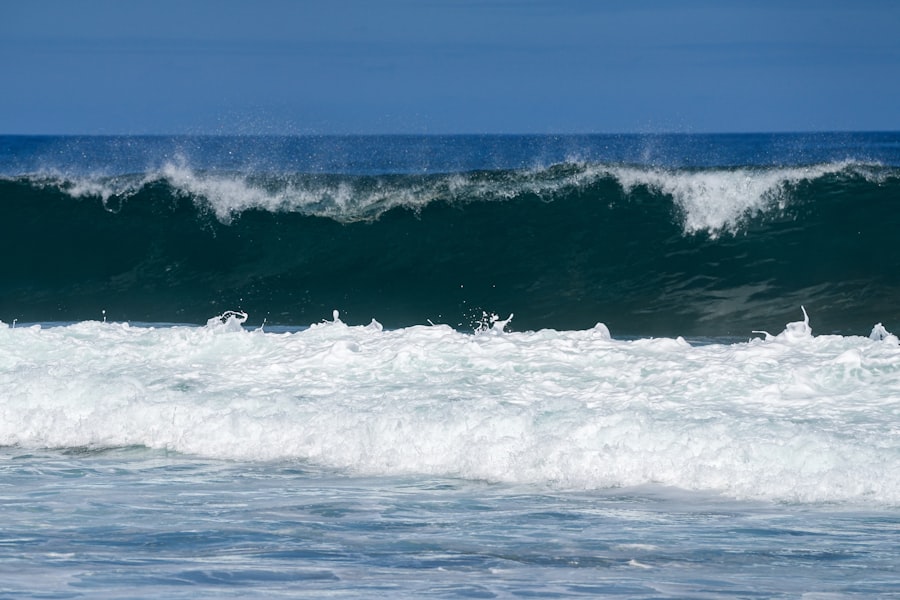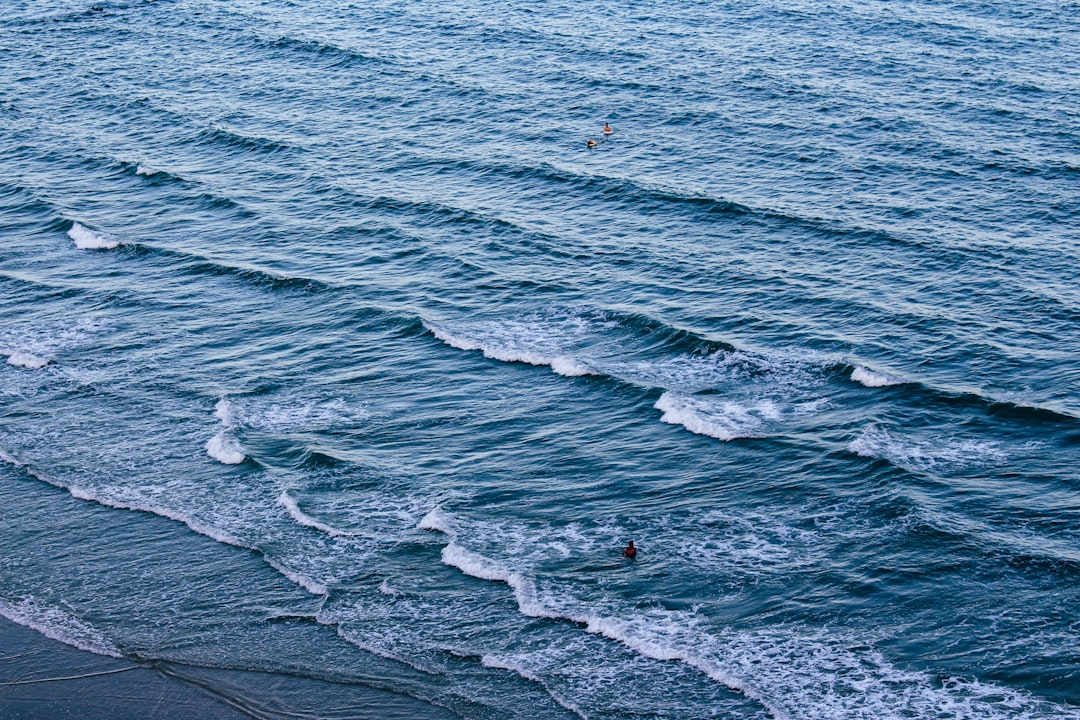The Drake Passage, a body of water located between the southern tip of South America and Antarctica, is notorious for its tumultuous swells and unpredictable weather patterns. This narrow stretch of ocean is often regarded as one of the most challenging maritime routes in the world, attracting adventurers, researchers, and commercial vessels alike. The swells in this region can reach staggering heights, creating a unique environment that has fascinated oceanographers and sailors for centuries.
The combination of strong winds, ocean currents, and the geographical features of the surrounding land masses contribute to the formation of these formidable swells, making the Drake Passage a subject of intense study and intrigue. Understanding the dynamics of Drake Passage swells is crucial not only for those who navigate its waters but also for scientists studying climate change and marine ecosystems. The swells are not merely a navigational hazard; they play a significant role in the broader context of oceanic and atmospheric interactions.
As such, the Drake Passage serves as a natural laboratory for examining the effects of swells on marine life, shipping routes, and even global weather patterns. This article delves into the various factors influencing the size of these swells, their historical records, measurement techniques, and their far-reaching impacts on both marine ecosystems and human activities.
Key Takeaways
- Drake Passage swells are large waves that occur in the Drake Passage, the body of water between South America’s Cape Horn and the South Shetland Islands of Antarctica.
- Factors influencing the size of Drake Passage swells include wind speed, duration, and fetch, as well as the presence of storms and atmospheric pressure systems.
- Historical records show that the largest Drake Passage swells can reach heights of over 30 meters, posing significant challenges to maritime activities in the region.
- Measurement techniques for Drake Passage swells include the use of wave buoys, satellite altimetry, and numerical modeling to track and predict wave behavior.
- Drake Passage swells can impact marine life by affecting feeding and migration patterns, as well as causing physical damage to vulnerable species such as penguins and seals.
Factors influencing the size of Drake Passage swells
Several factors contribute to the size and intensity of swells in the Drake Passage. One of the primary influences is wind speed and direction. The region is known for its fierce winds, particularly the westerlies that sweep across the Southern Ocean.
These winds can generate large waves that travel vast distances across open water. The fetch, or the distance over which the wind blows without obstruction, is also a critical factor; in the Drake Passage, the fetch can be extensive due to the lack of land barriers. As a result, even moderate winds can produce significant swells.
Another important factor is the ocean currents that flow through the passage. The Antarctic Circumpolar Current, which flows from west to east around Antarctica, interacts with other currents in the region, creating complex wave patterns. This current not only influences swell height but also affects wave frequency and direction.
Additionally, seasonal variations can lead to changes in swell characteristics; during certain times of the year, storms are more frequent and intense, leading to larger swells. The interplay between these elements creates a dynamic environment where conditions can change rapidly, making it essential for mariners to stay informed about current weather patterns.
Historical records of the largest Drake Passage swells

Throughout history, there have been numerous accounts of extraordinary swells in the Drake Passage. Sailors have long shared tales of monstrous waves that seem to rise from nowhere, often leading to perilous situations at sea. One notable event occurred in 2004 when a research vessel recorded waves reaching heights of over 30 meters (approximately 98 feet) during a severe storm.
Such records highlight not only the potential dangers faced by vessels traversing this route but also underscore the need for accurate data collection and analysis. Historical records also indicate that some of the largest swells have been associated with specific weather patterns, such as intense low-pressure systems that develop in the Southern Ocean. These systems can generate powerful winds that create massive waves capable of traveling thousands of kilometers before reaching the shores of South America or Antarctica.
The documentation of these events has been crucial for understanding the frequency and magnitude of extreme swells in the Drake Passage, providing valuable insights for both maritime safety and scientific research.
Measurement techniques for Drake Passage swells
| Measurement Technique | Advantages | Disadvantages |
|---|---|---|
| Wave Buoys | Direct measurement of wave height and period | Expensive to deploy and maintain |
| Ship-based Measurements | Can provide in-situ data | Dependent on ship availability |
| Satellite Altimetry | Global coverage | Limited spatial resolution |
| Radar Sensors | Continuous monitoring | Limited to nearshore areas |
Accurate measurement of swells in the Drake Passage is essential for understanding their characteristics and impacts. Various techniques have been developed over the years to monitor wave height, frequency, and direction. One common method involves using buoys equipped with advanced sensors that can record wave data in real-time.
These buoys are strategically placed throughout the passage to capture a comprehensive picture of swell activity. The data collected can then be transmitted to research institutions and meteorological agencies for analysis. In addition to buoy measurements, satellite technology has revolutionized the way oceanographers study swells.
Satellite altimetry allows researchers to measure wave heights from space by analyzing changes in sea surface elevation. This method provides a broader view of swell patterns across vast areas of ocean, complementing data collected from buoys. Furthermore, numerical modeling techniques are employed to simulate wave behavior under various conditions, helping scientists predict how swells may evolve in response to changing weather patterns or climate conditions.
The impact of Drake Passage swells on marine life
The swells in the Drake Passage have profound effects on marine life in the region. The turbulent waters create a dynamic environment that influences nutrient distribution and habitat availability for various species. For instance, upwelling zones generated by strong currents can bring nutrient-rich waters to the surface, supporting phytoplankton growth—the foundation of the marine food web.
This influx of nutrients attracts a diverse array of marine organisms, from small fish to large mammals like whales and seals. However, while some species thrive in these conditions, others may struggle to adapt to the extreme environment created by large swells. For example, certain fish species may find it challenging to maintain their position in turbulent waters, affecting their feeding and breeding behaviors.
Additionally, larger marine mammals may face difficulties navigating through high waves during feeding or migration periods. Understanding these impacts is crucial for conservation efforts aimed at protecting marine ecosystems in the face of changing ocean conditions.
The impact of Drake Passage swells on shipping and navigation

The formidable swells of the Drake Passage pose significant challenges for shipping and navigation.
Many shipping companies have developed specific protocols for navigating these waters, including route planning based on real-time weather data and swell forecasts.
The consequences of underestimating swell conditions can be dire; vessels may experience structural damage or even capsizing if caught off guard by sudden increases in wave height. Moreover, the impact of swells extends beyond immediate safety concerns; they can also affect shipping schedules and logistics. Delays caused by adverse weather conditions can lead to increased operational costs and disruptions in supply chains.
As global trade continues to expand, understanding and mitigating the risks associated with navigating through the Drake Passage becomes increasingly important for maritime industries.
The role of Drake Passage swells in climate and weather patterns
The swells generated in the Drake Passage play a crucial role in influencing climate and weather patterns not only in the Southern Hemisphere but also globally. The interaction between ocean currents and atmospheric conditions creates a feedback loop that affects temperature regulation and precipitation patterns across vast regions. For instance, strong swells can enhance heat exchange between the ocean and atmosphere, impacting local weather systems and potentially contributing to extreme weather events elsewhere.
Additionally, as climate change continues to alter ocean temperatures and currents, it is likely that swell patterns will also change over time. Increased storm intensity may lead to more frequent occurrences of extreme swells, further complicating our understanding of climate dynamics. Researchers are actively studying these relationships to better predict how shifts in swell behavior may influence global climate trends.
The potential for extreme Drake Passage swells in the future
Looking ahead, there is growing concern about the potential for extreme swells in the Drake Passage as climate change progresses. As global temperatures rise, it is expected that storm intensity will increase, leading to more powerful winds capable of generating larger waves. This trend could result in more frequent occurrences of extreme swell events that pose significant risks to navigation and marine ecosystems alike.
Furthermore, changes in ocean circulation patterns may also contribute to alterations in swell behavior over time. As scientists continue to monitor these developments, it becomes increasingly important to prepare for potential future scenarios involving extreme swells. This preparation includes enhancing maritime safety protocols and investing in research aimed at understanding how these changes may impact both human activities and natural ecosystems.
Safety considerations for navigating Drake Passage swells
Navigating through the Drake Passage requires careful planning and consideration of safety protocols due to its notorious swells. Mariners must stay informed about current weather conditions and swell forecasts before embarking on their journeys. Utilizing advanced technology such as satellite tracking systems and real-time weather updates can significantly enhance safety during transit through this challenging region.
Additionally, vessels should be equipped with appropriate safety gear and structural reinforcements designed to withstand rough seas. Crew training is also essential; sailors must be well-versed in emergency procedures should they encounter unexpected swell conditions. By prioritizing safety measures and remaining vigilant about changing environmental factors, mariners can mitigate risks associated with navigating through one of the world’s most treacherous maritime routes.
Research and monitoring efforts for Drake Passage swells
Ongoing research and monitoring efforts are vital for understanding the dynamics of Drake Passage swells and their broader implications. Various institutions collaborate on projects aimed at collecting data on wave heights, frequencies, and associated environmental factors. These efforts often involve interdisciplinary teams comprising oceanographers, meteorologists, biologists, and engineers working together to analyze complex interactions within this unique marine environment.
In addition to field studies involving buoy deployments and satellite observations, researchers are increasingly utilizing computer modeling techniques to simulate swell behavior under different scenarios. These models help predict how changes in wind patterns or ocean temperatures may influence future swell characteristics. By advancing knowledge about these dynamics, scientists can provide valuable insights that inform maritime safety practices as well as conservation strategies aimed at protecting vulnerable marine ecosystems.
Understanding and preparing for Drake Passage swells
In conclusion, understanding Drake Passage swells is essential for ensuring safe navigation through one of the world’s most challenging maritime routes while also recognizing their broader implications for marine life and climate dynamics.
Historical records highlight both the dangers posed by these swells as well as their significance within global weather systems.
As climate change continues to reshape our oceans, ongoing research efforts will be crucial for predicting future swell behavior and mitigating associated risks. By prioritizing safety measures during navigation while also investing in scientific studies aimed at understanding these complex dynamics better, society can prepare for whatever challenges lie ahead in this tumultuous yet fascinating region of our planet’s oceans.
The Drake Passage, known for its formidable swells, is a notorious stretch of water between the southern tip of South America and Antarctica. The swells in this region can reach impressive heights, often challenging even the most seasoned sailors. For those interested in understanding more about the dynamics and challenges of navigating such turbulent waters, a related article on the topic can be found on MyGeoQuest. This article delves into the geographical and meteorological factors that contribute to the size and frequency of swells in the Drake Passage. To explore this further, you can visit the article by clicking on this link.
WATCH NOW! Drake Passage: Earth’s Deadliest Waters Revealed
FAQs
What is the Drake Passage?
The Drake Passage is the body of water between the southern tip of South America and the northern tip of the Antarctic Peninsula. It is known for its rough seas and challenging sailing conditions.
How big are the swells in the Drake Passage?
The swells in the Drake Passage can reach heights of 30 feet (9 meters) or more. The area is notorious for its strong winds and large waves, making it one of the roughest stretches of water in the world.
What causes the large swells in the Drake Passage?
The large swells in the Drake Passage are primarily caused by the strong westerly winds that sweep across the Southern Ocean. These winds can generate powerful waves that can be challenging for ships to navigate.
Are there specific times of the year when the swells are larger in the Drake Passage?
The swells in the Drake Passage are generally larger during the austral winter (June to August) when the winds are at their strongest. However, rough seas can occur at any time of the year due to the unpredictable nature of the Southern Ocean.
How do the large swells in the Drake Passage affect sailing and navigation?
The large swells in the Drake Passage can make sailing and navigation challenging, especially for smaller vessels. Ships may experience heavy rolling and pitching, and it is not uncommon for passengers and crew to experience seasickness. Captains and crew must carefully navigate the swells to ensure the safety and comfort of everyone on board.
